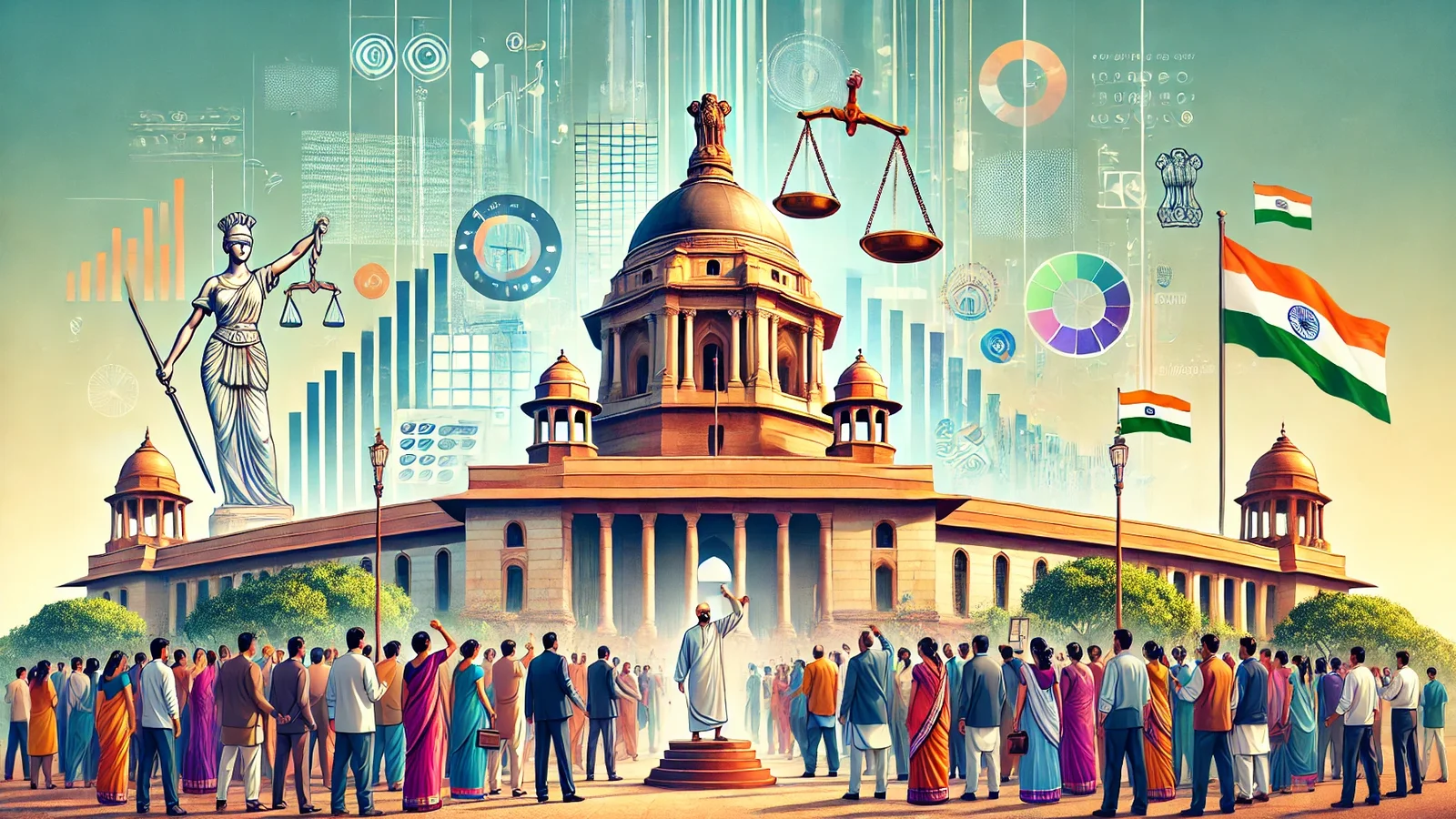When Governance Meet Faith: Examining the Implications of PM and CJI meetup for Puja

Oct. 16, 2024 • Vaishnavi Dhakad
The recent religious conclave of Prime Minister Narendra Modi and Chief Justice of India D.Y. Chandrachud on 7th October 2024 where the Hon'ble PM went to CJI's residence for a Ganesh puja has brought to the fore much-needed debate on the convergence of governance and faith in India. Such a convergence calls for interrogation on secularism, public trust, and constitutional duty.
The Event Recently
The function is said to have been a religious-oriented function organized on the eve of Ganesh pooja held at the residence of CJI Chandrachud, where PM Modi was present. Political leaders, unlike the holders of other offices, often attend such functions to establish a connection with their constituencies but the appearance of PM Modi with the Chief Justice raises serious questions about the perception of an independent judiciary. This raises the question on independency judiciary, and how to maintain the boundary between the judiciary and the governance, when there is involvement of relegion.
What is Secularism?
Secularism is one of the core practices within the Indian Constitution. It is to ensure that the government neither gives preference to religious affairs nor discriminates between faiths. Article 25 provides for freedom of religion and Article 14 develops the principle of equality before the law. These provisions are developed towards creating a plural society where belief transcends all minds without any interruption from the state.
Maintaining Boundaries
This raises certain questions, such as how the judiciary should remain distinctly independent while incorporating cultural practices or should the heads of important institutions participate in events where their constitutional ethos can conflict? It creates confusion in public perception regarding judicial impartiality, making the judiciary vulnerable even to casual influence.
It is a deep consequence. If the judiciary somehow acts like the executive, then public trust in the institutions constituting law may diminish. The people may begin questioning whether judgments passed are just or not, lest political or religious considerations influence the law and not the law influencing the decisions.
Major Concerns
- Undermining Secularism Principles
The weakening of secularism as outlined in the Constitution through religious events involving high-ranking officials is one of the central fears. The criticism has been that whenever such involvement occurs, it creates unclear lines between governance and religion and hence gives an impression of bias to some religions over others, usually against the constitutional mandate of requiring a state to be impartial and neutral.
2. Public Trust in Institutions
Such participation by influential personalities like the PM and CJI has implications regarding people's confidence level in governmental and judicial institutions. Ultimately, this becomes a question of the independence of judiciary, and a weakening perception may damage public confidence in the democratic exercise.
3. Cultural and Political Sensitivity
India is a culturally diversified country, mainly religious. Religiously inclined leaders tend to isolate sections of the population. Social cleavages may result in stress within or between groups. Public office-holders, therefore, must pay homage to cultural diversification and do much more to guarantee inclusivity rather than exclusivity.
4. Setting a Precedent
Actions of such leaders as PM Modi and CJI Chandrachud will set important precedents to be followed by the future governance. So, if officials at the highest echelons of power start going to religious functions, it will begin to change the definition and practice of secularism in India gradually. This, of course, will utterly violate the secular ethos of the Constitution
5. Political Instrumentalization of Religion
The other area of concern is the risk of political using religion for political gain. When politicians become too closely identified with specific religious practices, they leave themselves open to religion as a political instrument for coming to power. This erodes the secular character of the state and leads to policies that favor some religious groups against others-repugnant to the doctrines of justice and equality emanating from the Constitution.
Conclusion
Religious events with the attendance of PM Modi and now CJI Chandrachud carry strong implications for governance in India and its secular structure. Such events make one ponder how leaders seem to balance faith and governance so that these discussions within the society could serve as an important reminder that secular principles were sustained even while governance remained open for all irrespective of faith. Moreover, it raises a question on the independence of the judiciary. In a country like India where religion is given the utmost importance, there occurs a need for achieving unity and inclusiveness to preserve the secular character of the state. That threat would come through public servants such that their acts do not run afoul of constitutional promises that Indian democracy makes.
Books
R. Rajan, Secularism in India: A Constitutional Perspective 112 (OUP 2019).
Journal Articles
A. Gupta, The Role of Religion in Indian Politics, 15 J. Indian Pol. Sci. 50 (2020).
M. Sharma, Judicial Independence in India: Challenges and Solutions, 23 Ind. J. L. & Just. 45 (2021).
Cases
Kesavananda Bharati v. State of Kerala, AIR 1973 SC 1461.
Statutes
The Constitution of India, 1950 (Article 14, Article 25).
Reports
Ministry of Home Affairs, Annual Report on Secularism in India (2023).
News Articles
R. Kumar, PM Modi and CJI Chandrachud Attend Ganesh Puja, Times of India (Oct. 8, 2024), http://www.timesofindia.com/pm-modi-cji-ganesh-puja.
N. Singh, Political Participation and Secularism, The Hindu (Oct. 10, 2024), http://www.thehindu.com/political-participation-secularism.
The author affirms that this article is an entirely original work, never before submitted for publication at any journal, blog or other publication avenue. Any unintentional resemblance to previously published material is purely coincidental. This article is intended solely for academic and scholarly discussion. The author takes personal responsibility for any potential infringement of intellectual property rights belonging to any individuals, organizations, governments, or institutions.